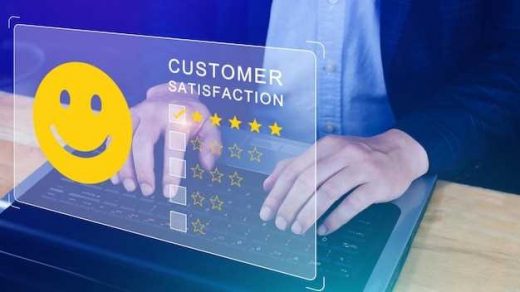Effective Marketing Strategies: A Comprehensive Guide for Business Growth
Marketing is a multifaceted discipline that plays a critical role in the success of any business. The main question many business owners have is, “What are the basic marketing strategies that can help my business grow?” The answer lies in understanding and implementing several fundamental tactics. In this article, we will explore these basic marketing strategies in depth, including how to identify your target audience, create compelling value propositions, and leverage both digital and traditional marketing channels. By following these guidelines, businesses can effectively reach their target audience, increase sales, and build lasting relationships with customers. Our exploration will provide actionable insights that are easy to apply, even for those new to marketing.
One of the first steps in effective marketing is to understand your saif zone, which refers to the safe zone where your business can thrive without direct competition. This concept is crucial because it allows you to focus your efforts on areas where you can excel. By identifying and optimizing your saif zone, you can better allocate resources and tailor your marketing strategies to meet the specific needs of your target audience. Let’s delve deeper into the essential components of understanding your target audience.
Understanding Your Target Audience

Market research is the foundation of any effective marketing strategy. By gathering and analyzing data about your target audience, you can make informed decisions that resonate with them. This involves identifying your market segment, using surveys and questionnaires, and analyzing trends and consumer behavior. Conducting thorough market research allows you to understand the preferences, needs, and pain points of your potential customers, which in turn helps you tailor your marketing messages for greater impact.
Creating Buyer Personas
Once you’ve conducted market research, the next step is to create detailed buyer personas. These personas represent your ideal customers and help you tailor your marketing efforts. Buyer personas typically include demographic information, psychographic information, and insights into the motivations and pain points of your target audience. Developing these personas can be incredibly useful for crafting personalized marketing messages that resonate on a deeper level with your audience. In the table below, we outline some key elements to consider when creating buyer personas.
| Element | Description |
|---|---|
| Demographics | Age, gender, income level, education, occupation |
| Psychographics | Interests, hobbies, values, lifestyle |
| Motivations | Reasons for purchase, goals, challenges |
| Pain Points | Problems or issues that your product/service can solve |
Crafting a Compelling Value Proposition
Your USP is what sets you apart from your competitors. It highlights the unique benefits your product or service offers. Identifying your strengths and focusing on the benefits rather than just features can make your USP more compelling. Communicating your value clearly can help you attract and retain customers who see the true worth of your offering. To develop a strong USP, consider the following steps:
- Identify your core strengths and unique benefits.
- Analyze your competitors and note where you excel.
- Craft a clear and concise message that communicates your value.
Developing a Strong Brand Identity
A strong brand identity helps you stand out in the crowded marketplace. It goes beyond just a logo and includes your overall brand experience. Consistent branding elements, a distinct tone of voice, and a coherent visual identity are essential components. A strong brand identity can help build trust and recognition among your target audience, making it easier to establish a loyal customer base. Consider these aspects when building your brand identity:
- Ensure consistency across all branding elements.
- Develop a unique tone of voice that aligns with your brand values.
- Create a cohesive visual identity that includes logos, color schemes, and design elements.
Leveraging Digital Marketing Channels
Social media platforms are powerful tools for reaching and engaging with your audience. Select the platforms that align with your brand and audience, and develop a content strategy that resonates with them. Use engagement techniques such as interactive posts, live videos, and polls to keep your audience engaged. Regularly analyze your metrics to understand what’s working and what’s not, and adjust your strategy accordingly. Effective social media marketing can improve brand awareness, drive traffic, and foster customer loyalty.
Implementing Search Engine Optimization (SEO)
SEO is essential for increasing your website’s visibility on search engines. It involves optimizing your website and content to rank higher in search results. On-page SEO techniques, such as keyword research and usage, meta descriptions, title tags, and internal linking, are critical components. By improving your site’s SEO, you can attract more organic traffic and provide a better user experience, ultimately leading to higher conversion rates and increased revenue.
On-Page SEO Techniques
On-page SEO includes practices that optimize individual web pages to improve search rankings and attract organic traffic. Here are some key techniques:
- Conduct keyword research to identify relevant search terms.
- Incorporate keywords naturally into your content.
- Optimize meta descriptions and title tags for each page.
- Use internal linking to enhance site navigation and SEO.
Utilizing Email Marketing
Email marketing is a cost-effective way to nurture leads and maintain relationships with your customers. Building an email list, crafting compelling email content, and analyzing and optimizing email campaigns are crucial steps. Personalized emails that address the specific needs and interests of your subscribers can significantly improve engagement rates. Additionally, segmenting your email list based on customer behavior and preferences can lead to more targeted and effective campaigns.
Integrating Traditional Marketing Methods
Print Advertising
Print advertising remains a viable option, particularly for reaching local audiences. Various types of print media, such as newspapers, magazines, and brochures, can be utilized to convey your marketing message. Designing effective ads requires a clear understanding of your target audience and a compelling call to action. Distribution strategies, such as placing ads in high-traffic areas or partnering with local businesses, can enhance the reach of your print advertising efforts.
Event Marketing
Hosting or participating in events can provide direct engagement with potential customers. Well-planned events, whether physical or virtual, offer opportunities for brand exposure and customer interaction. Key aspects of event marketing include planning and promotion, on-site engagement, and follow-up strategies. Successful events can leave a lasting impression on attendees, strengthening your brand’s reputation and fostering customer loyalty.
Conclusion
Understanding and implementing basic marketing strategies is crucial for any business looking to succeed in a competitive market. By carefully researching your target audience, crafting a compelling value proposition, leveraging digital marketing channels, and integrating traditional marketing methods, you can create a comprehensive marketing plan that drives growth and builds lasting customer relationships. Start by identifying your saif zone and tailor your strategies accordingly to achieve the best results.
Frequently Asked Questions
1. What are buyer personas, and why are they important?
Buyer personas are detailed representations of your ideal customers based on market research and data. They are important because they help you tailor your marketing strategies to meet the specific needs and preferences of different segments of your audience.
2. How does SEO benefit my business?
SEO improves your website’s visibility on search engines, leading to higher organic traffic, better user experience, and increased credibility. It can significantly impact your online presence and drive more potential customers to your site.
3. What is a unique selling point (USP)?
A unique selling point (USP) is a distinct benefit or advantage that sets your product or service apart from competitors. It highlights why customers should choose you over others.
4. Why is brand identity important in marketing?
Brand identity helps create a consistent and memorable impression in the minds of consumers. It encompasses your visual elements, tone, and overall experience, establishing a strong connection with your audience.
5. How can social media marketing improve customer engagement?
Social media marketing allows businesses to interact directly with their audience through posts, comments, and messages. It fosters a sense of community, encourages feedback, and helps build brand loyalty through regular and meaningful engagement.



Recent Comments